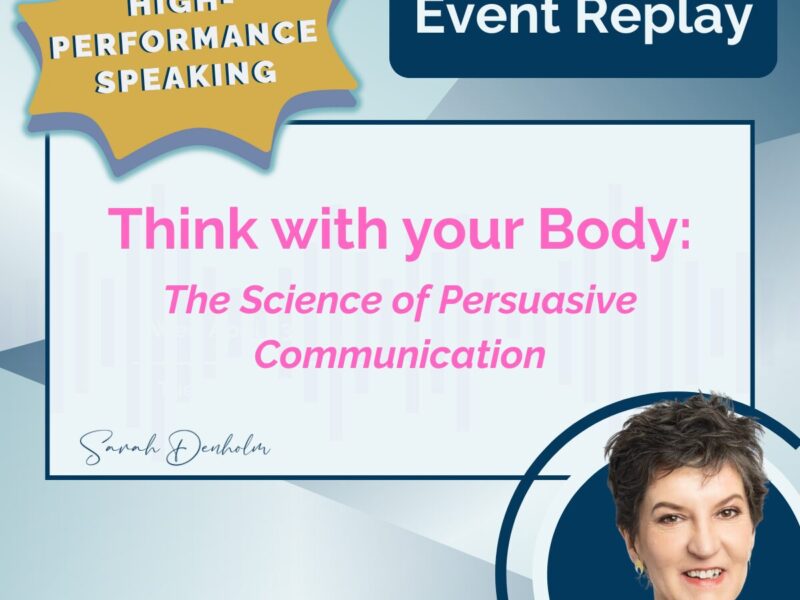Public Speaking Anxiety – A Drive for Certainty?

Anxiety: it’s not only a signal that something needs attention – it can also be a drive to eliminate uncertainty and a sense of loss of control in our lives. And in working with many clients on their public speaking anxiety, I’m frequently seeing that many of them have a strong drive for certainty and control around their speaking.
This is a tricky one – because public speaking is an inherently uncertain activity. However, if you recognise yourself as someone who’s uncomfortable (or driven mad) by your need for certainty, there are things which you can do to help yourself.
Uncertainty leads to 2 strategies: approach or avoid.
Approach might look something like this:
You obsessively gather information about your topic, thinking that you need to know pretty much everything possible before you can stand up and present
You constantly seek reassurance from other people – usually colleagues or family – that you’ll be ok
Avoidance might look like this:
You procrastinate about your presentation and leave it until the last minute – but the worry nearly sinks you
You avoid public speaking altogether! Even changing jobs or not making career progress if that’s what it takes
So what can you do to help yourself? This is a big topic, but I’ve distilled a few ideas that have really helped my clients into this article. These ideas are:
Step one: recognise that yes, certain elements of public speaking are outside your control.
Step two: having recognised this, can you now loosen your grip at all on the need for your talk to have a certain outcome? Or loosen your attachment to the idea that your public speaking should/must be a certain way…polished? Seamless? Flawless? Not a single ‘um’ or fumble?
Step three: set goals within your control – goals which you can be certain about.
Firstly, here are examples of goals which you can’t control:
- Wanting everyone in the audience to like you/like your message
- Picturing everyone smiling at you
- Getting the whole audience to take a specific action after your presentation
- Your whole talk going smoothly and seamlessly, with not a single rough moment
And here’s a list of what you can control:
- Practising the opening and close of your talk – out loud t00 – until you really know it, it’s embedded in your mind. Another article I’ve written on effective practice is here. Obviously, practising the whole talk is ideal: but if you can’t do that or don’t have the time, then the opening – when you’re usually the most nervous and the audience is looking at you – is very helpful.
- Venue: if you’re going to a new venue, try and get into the room beforehand so that you can start to acclimatise your system to that space, and make it more ‘your’ territory. I had a client this week who was presenting to the board of directors, and she chose to go into the room briefly on a pretext while they were having lunch, so that she wouldn’t be walking in ‘cold’ for her presentation. And when I gave a keynote last weekend, I got there early to do the soundcheck and settle my body in the big room. I walked around the stage and told myself “This is my space”. This really does help. And if you can’t get to the venue, try and get a photo. Sounds wacky but it works.
- Breathe and anchor yourself in what’s actually happening right now. Anxiety is worry about the future….and we can’t control the future, much as we might like to try. There’s a theory that one reason why successful entrepreneurs have done so well is because of their ability to tolerate uncertainty.
- Your self-talk. This takes practice. Recognise where you’re talking negatively to yourself, or hanging everything onto a specific outcome. Then come up with a new, short positive statement such as: “It’s ok”. “I can tolerate a little uncertainty”. “I don’t have to take this/myself so seriously”. (Humour is a great way to reframe how you’re feeling, and it’s often the quickest way.)
To sum up:
Uncertainty in public speaking and life is inevitable…and trying to control it doesn’t work, and uses masses of energy and resources which we can’t afford to use. So, we have to let go of what we can’t control, and focus on what we can. Then, we’ll be able to walk to the front of the room and know we’re going to do the best we can, in the timeframe we’ve had available.




